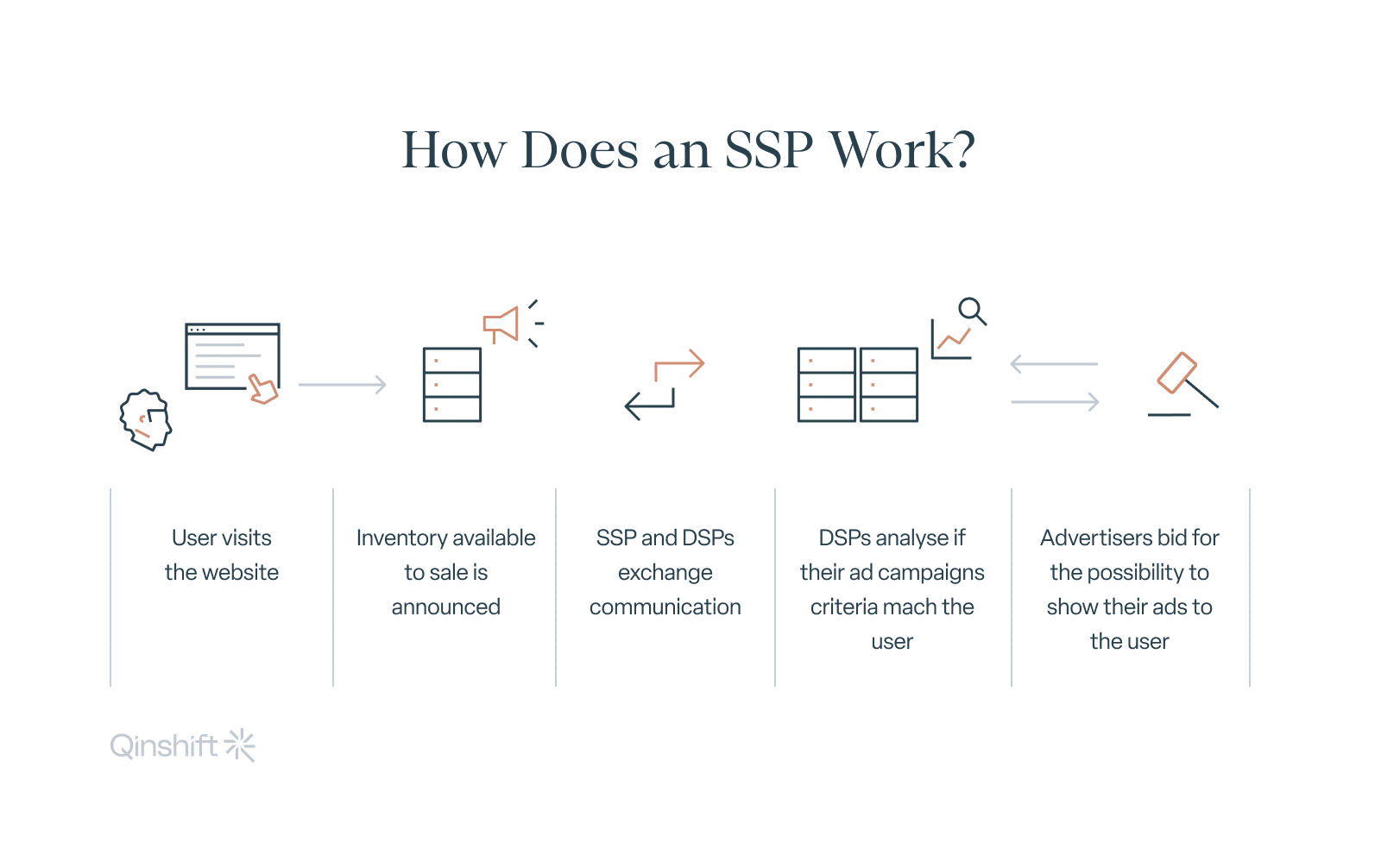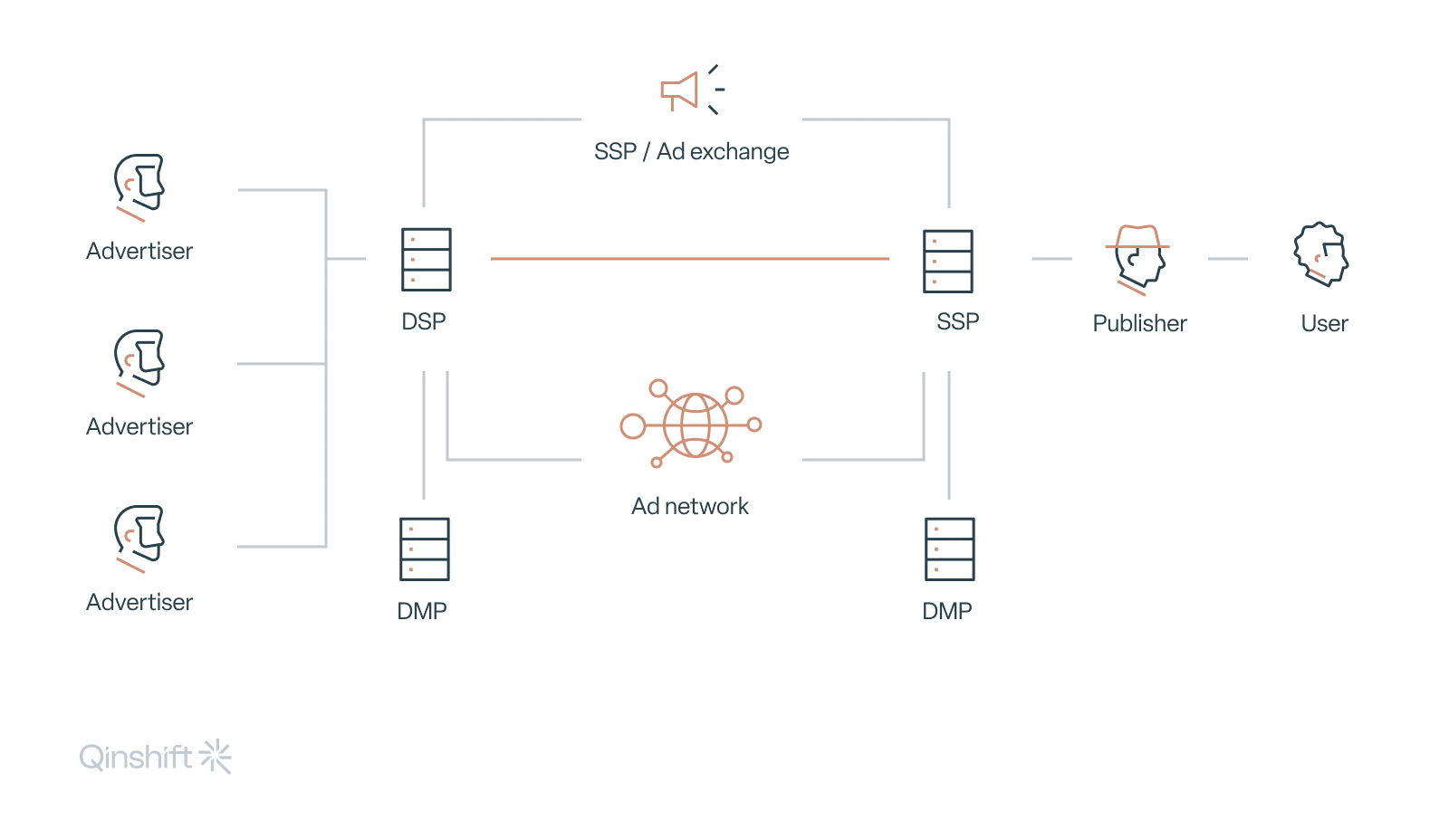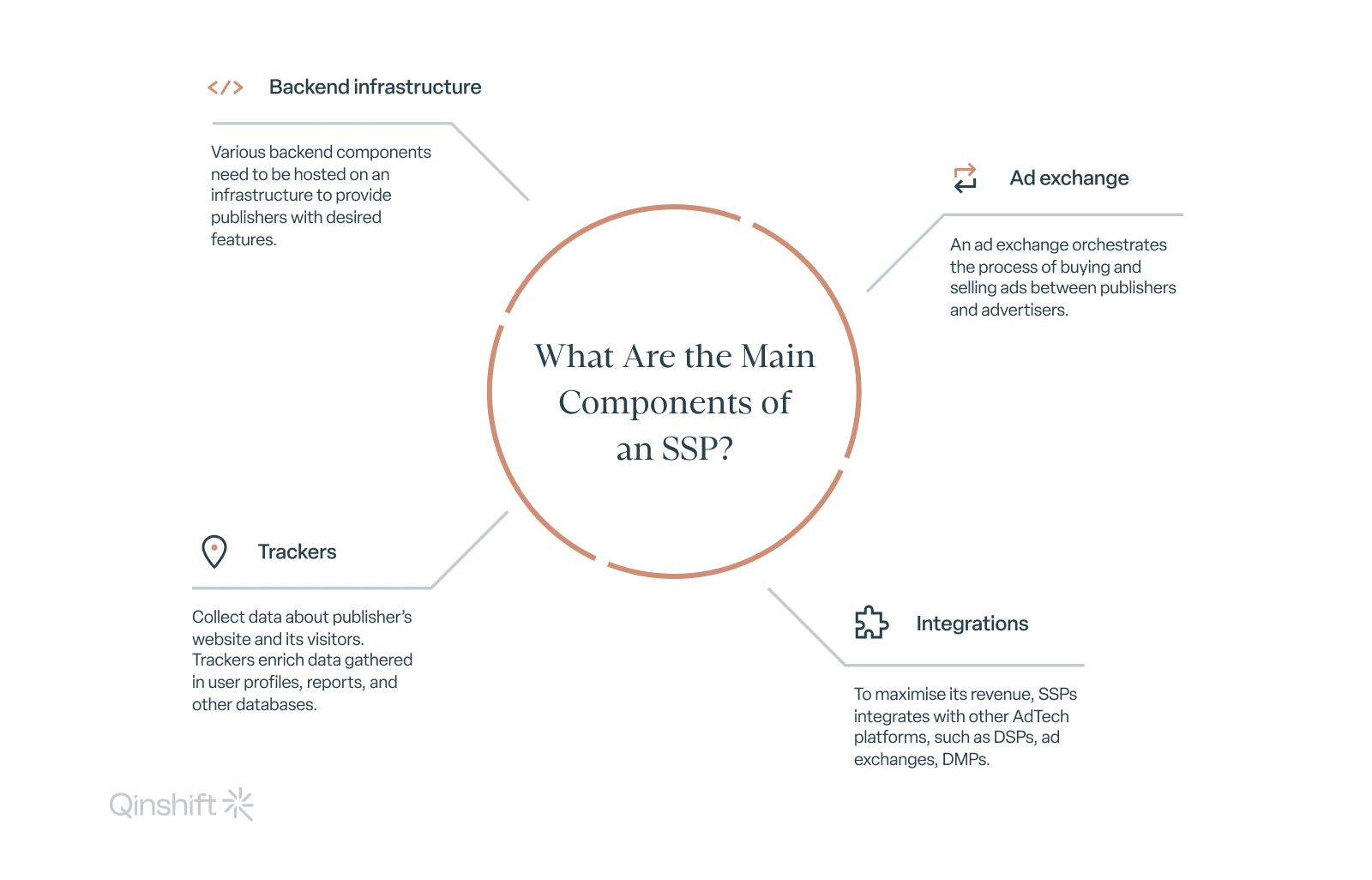What Is a Supply-Side Platform (SSP) and Ad Exchange?

Supply-side platforms (SSPs) are the digital agents that represent publishers in the advertising ecosystem.
Since the 2000s, SSPs have continued to automate and streamline the way media sellers and buyers keep finding common ground in how they operate.
This article briefly explains:
- what SSPs and ad exchanges are and how they work,
- how SSPs help monetise ad inventory,
- what the benefits of using SSPs are.
Key Points
The supply-side platform is a piece of advertising technology that publishers use to manage, market, and optimise their ad inventory.
SSPs integrate with demand-side platforms (DSPs), ad networks, ad exchanges, and data management platforms to facilitate ad campaign operations.
Publishers benefit from SSPs by automating their inventory sales, optimising their monetisation strategies, increasing revenue, setting price floors, and securing their brands.
What Is a Supply-Side Platform?
A supply-side platform helps publishers manage, sell, and optimise ad inventory on their websites and mobile applications. It also automates the process of displaying ads. This way, publishers monetise their ad space using a single advertising technology platform.
How Does a Supply-Side Platform Work?
There are several ways of selling ad inventory through an SSP:
- Via ad networks
An ad network is a between publishers and advertisers. SSPa can connect to premium, vertical, and specialised ad networks to sell ad inventory.
- Via direct deals with DSPs
A demand-side platform (DSP) helps advertisers buy ad inventory from publishers on an impression-by-impression basis. SSPs facilitate and automate this process.
- Via real-time bidding (RTB) auctions
In this scenario, the publisher’s SSP connects to a media buyer’s DSP through the OpenRTB protocol. OpenRTB is an application programming interface (API) that allows platforms to communicate with one another using a common language to buy and sell digital media.
The most common way to market ad inventory is during RTB auctions. Here’s how it works:
1. A publisher sets up their SSP with available ad inventory.
2. Each time a user to whom advertisers wish to display their ad visits the publisher’s website, the SSP notifies all AdTech platforms that express their willingness to buy such a display.
3. Media buyers place bids on the impression for sale via their DSPs.
4. After closing the auction, the SSP displays the winning ad to the visitor.

What Is an Ad Exchange?
An ad exchange is a platform between SSPs and DSPs that helps in buying and selling digital media assets. You can think of it as a marketplace like eBay or a stock exchange — in both cases, buyers and sellers meet in the same place to deal.

How Does an Ad Exchange Work?
An ad exchange functions slightly differently than an SSP. The platform first receives information about an ad space to sell as well as information on a viewer from SSPs. To match an advertisement with campaign criteria, DSPs analyse information and, if relevant, place bids on the ad impression. An RTB auction occurs, with the highest bid winning the impression. The ad exchange coordinates with the SSP to display the winning ad on the publisher’s site or app.
What Is the Difference Between an SSP and an Ad Exchange?
To draw a clear distinction, SSPs equip publishers with tools to manage, sell, and optimise inventory, while ad exchanges act as the transaction platform for both advertisers and publishers.
Although traditionally separate entities, modern SSPs often integrate ad exchange functionalities, allowing direct connections between media sellers and media buyers.
What Are the Main Components of an SSP?
SSPs comprise various components, including backend infrastructure, integrations with other AdTech platforms, ad exchanges, trackers, and reporting databases. These elements work together to streamline the selling of ad inventory, data collection, and campaign analytics.
Backend Infrastructure
The backbone of an SSP is its infrastructure that carries all the operational tasks. Amazon Web Services (AWS) is an example of a hosting platform for backend components.
Integrations
To sell ad inventory and deliver precise information on ad campaigns, SSPs integrate with other AdTech platforms, including ad servers, DSPs, ad exchanges, and data-management platforms (DMPs).
Ad Exchange
An SSP can also include an ad exchange component to enable establishing direct connections with DSPs, putting aside calls to external ad exchanges.
Trackers
Elements that collect data about the publisher’s website and its audience are called trackers. A tracker powers databases containing user profiles and reports.

The aforementioned components power the SSP’s features:
- User interface
- Analytics and reporting modules
- Header-bidding functionality
- Yield-optimization feature
- Inventory and campaign management modules
What Are the Benefits of an SSP for Publishers?
Supply-side platforms — especially custom SSPs — offer several advantages to publishers.
Here are the most important five:
1. Publishers can automate inventory sales
SSPs automate the selling process, allowing publishers to monetise their websites and apps, irrespective of their size. This automation streamlines transactions for display, video, and native ad spaces.
2. Publishers can optimise their monetisation strategies
SSPs provide detailed insights into bidding activities, allowing publishers to understand the value of their inventory. This information helps in optimising monetisation strategies.
3. Publishers can increase revenue
By connecting to multiple networks, ad exchanges, and DSPs, SSPs enable more buyers to participate in real-time bidding, potentially increasing yield for publishers.
4. Publishers can set price floors
SSPs empower publishers to set price floors, meaning the starting prices below which their inventory is not sold. This level of control helps mitigate revenue loss in second-price auctions.
5. Publishers can secure their brands
SSPs enhance brand safety for publishers by blocking unwanted ads, implementing blacklisting, and allowing publishers to specify buyers or channels for their inventory.
Why Build a Custom Supply-Side Platform?
While standard SSPs provide an array of features for publishers aiming to monetise their websites, there are significant advantages to building a proprietary SSP.
Here are some of the key benefits:
1. Ownership of data and technology
Developing a custom SSP grants publishers control over both the technology and the data involved. This is especially advantageous for companies managing multiple websites, allowing them to consolidate and manage their data more effectively.
2. Getting rid of fees and commissions
While building your own SSP won’t completely eliminate all fees and commissions associated with online media buying, it does eliminate both the known and hidden fees imposed by SSP vendors. This can lead to substantial cost savings in the long run.
3. Control over the product’s roadmap
The most significant advantage of building a custom SSP is the possibility of catering to your unique business use case. This tailored approach enables building features essential to your operations and getting more efficient and streamlined outcomes.
Final Thoughts on SSPs and Ad Exchanges
Supply-side platforms and ad exchanges play a crucial role in connecting publishers with advertisers. They automate and streamline the process of selling available ad inventory to media buyers, and thus monetise publishers’ digital assets.

